
Behavioral Optometry – Behavioral Optometrist
Behavioral optometry is a growing field. As a result, many people have never heard of it. If you’re one of them, you’re not alone! However, as part of the Rebuild Your Vision family, you are already contributing to this burgeoning field.
This growing subspecialty of optometry uses vision therapy to expand vision care. You see, strong vision is much more than being able to see 20/20. All that means is that you can see clearly when objects are 20 feet away. There are many more ways we can measure vision health.
A behavioral optometrist uses a wide array of exams to study your vision. Many of the tests require you to answer verbally because they’re related to how you interpret your vision. Keep reading to learn more about behavioral optometry and its potential to improve your vision.
Why Is Behavioral Optometry Necessary?
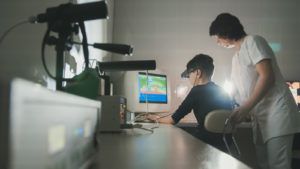 When you look across the room and see your television, there’s a lot more happening in your body than you know. Your eyes see the TV, but the brain identifies it, describes it, interprets it, and chooses what action to take. Perhaps you’ll continue looking at the TV, perhaps you’ll blink or look away. In actuality, your eyes have very little control over your vision. They are merely the tools your brain uses to interpret the world around us.
When you look across the room and see your television, there’s a lot more happening in your body than you know. Your eyes see the TV, but the brain identifies it, describes it, interprets it, and chooses what action to take. Perhaps you’ll continue looking at the TV, perhaps you’ll blink or look away. In actuality, your eyes have very little control over your vision. They are merely the tools your brain uses to interpret the world around us.
Because of the immense connection between the brain and the eyes, behavioral optometrists consider this connection at the core of their practice. The tests do measure your sight, yes, but also your brain’s response to what you see.
Hundreds of years ago, humans mostly relied on their distance vision. They hunted, looked for predators, and lived mainly outdoors. Today’s world is nearly the complete opposite. Most of what we see in our indoor lifestyles is within twelve feet of our eyes. Perhaps you’re a student reading textbooks or your job requires using a computer. These lifestyles add extra pressure to your vision skills that our ancestors never would have experienced.
Because of the strain and tension caused by modern lifestyles, traditional optometry often isn’t enough for our visual health. It’s important to see specialists who have studied this massive change in humanity. They know how to address its effects on our vision.
When to See a Behavioral Optometrist
Everyone and anyone can see a behavioral optometrist to improve their vision. Some of the most common patients are children. If you have a child, it’s important to notice when they complain about their vision or indirectly get frustrated with it. Perhaps they struggle with playing sports, coordination, and thus, motivation. Maybe your child doesn’t like to work on his/her own at school because they’d rather depend on a friend’s sight. They may start to develop behavioral problems and issues with their confidence. If you’re getting
Behavioral optometrists believe that these kinds of behaviors, as well as poor performance during visual tasks, are a sign of non-optimal visual skills. Dr. Stanley Appelbaum, author of Eye Power: A Cutting-edge Report on Vision Therapy, studied the role of vision in children’s behavior. His unique approach to understanding the role of the eyes in learning involved “how eyes work together and move together and process information and store information and do something with the information.”
Therefore, so-called behavioral problems can be tackled from the standpoint of getting the eyes and brain to work together better.
Here’s an Example…
Arizona Cardinals wide receiver Larry Fitzgerald is a good example. As a child, he did not do well in school and was a poor athlete. However, then his grandfather began to use vision drills, such as asking his grandson to balance on a board while trying to track a dot. Or, he’d ask him to walk on a wood rail while focusing on an object. This vision training was designed to improve perception, hand-eye coordination, reflexes, focus, and more. Fitzgerald credits this vision training for his successes both on and off the field.
Appelbaum himself suffered from chronic headaches as a child and thus hated to read. In optometry school, he discovered he had “convergence insufficiency.” This condition is characterized by eyes that don’t turn in together, affecting close work such as reading. He was treated with eye exercises and his headaches disappeared. Now he loves to read. This is yet another testament to the benefits of behavioral optometry.
Studies show that over 25% of children have undetected vision problems. In some cases, children suffering from vision-related issues have been inaccurately diagnosed with ADHD or ADD.
These undetected and therefore untreated vision problems can impede a child’s ability to reach their potential. These problems commonly include:
- Poor eye-movement control or ‘tracking issues’
- Problems with accommodation (when the eyes don’t focus well together or sustain focus at various distances)
- Convergence insufficiency
- Difficulties sustaining visual attention
- Poor visual-motor integration (bad hand-eye coordination)
- Weak visual form perception (the ability to reproduce and generalize shapes)
- Poor visual memory
These issues can prevent kids from doing well in school, sports, and even socializing. If behavioral optometry can help even a fraction of these kids reach their potential, then this exciting new field could revolutionize the lives of millions. It’s exciting to know that you are part of this change.
Behavioral Optometry at Home
There are many effective ways you can take elements of behavioral optometry to practice at home. If you or your child is suffering from vision problems, consider trying eye exercises and stretches. Doing these exercises daily can improve your eye muscles’ agility and thus, visual acuity. Plus, they can help relieve stress and tension from excessive up-close work and screen time.
Here are some of the best eye exercises to try:
- The 10-10-10 Rule
- Eye-Finger Exercise
- The William Bates Method
- Varying Focus Exercise
- Clock Face Exercise
These exercises are also part of an at-home vision improvement practice called vision training. In this theory, your eyes require exercise like any other body part. We sit up, walk, run, and rest our legs all day. Our eyes, on the other hand, are often open and staring ahead. It’s important to work on their flexibility and agility. Whether you’re driving to work, watching the news, or eating lunch, consider training your eyes. It’s not the same commitment as going to the gym!
Behavioral optometry acknowledges the brain’s connection to vision. It also addresses the impacts on behavior that poor vision can have. It’s incredibly important for children with perceived vision problems to see a behavioral optometrist. Find one in your city and start vision training at home.
Our Rebuild Your Vision Ocu-Plus Formula Contains All 17 Vitamins, Minerals, and Herbal Supplements to Improve Your Eye Health!




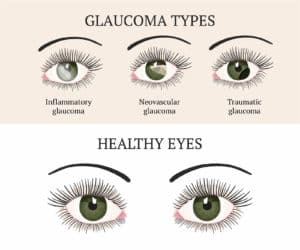
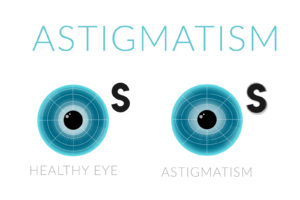
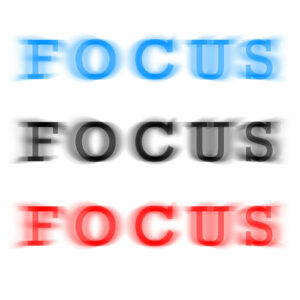



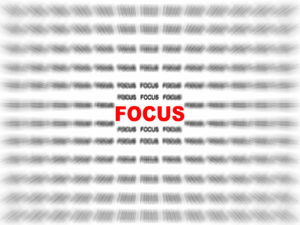
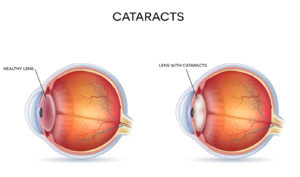
Thanks so much for sharing this information! I know firsthand the importance of seeing a behavioral optometrist as well as seeking additional help from a skilled ophthalmologist. Vision therapy was key for my son, my daughter and me! I detail it on my blog at healingmysight.com if any of your readers are interested.
I think everyone should be aware of behavioural optometry because it can really help us a lot.
Dear Tyler Sorensen,
Besides behavioral optometrist and regular optometrist, what others eyes doctors are there?
Thanks.
So I’d comment that you don’t “believe” that these kind of behaviour are signs of non-optimal visual skills. You “know” this to be true because the great body of scientific research supports this conclusion! And not just optometry research – psychology research, neurology research & even chiropractic research validates your approach. Thanks for sharing this information. L:-)
Very useful, informative and instructive article.
At age 7 my son was told that he was too old for vision therapy and that he should just wear glasses to protect his ‘good eye’. I would still like to get him those exercises but I don’t know how to find a behavioral optometrist in my area. Any suggestions? He is 14 now. Amblyopia and Nystagmus are his diagnosis. 20/25 Right eye and 20/200 Left.
Is there a website to find these behavioral optometrists?
Hi Marilyn,
The following links will help you to find a behavioral optometrist in your area – he or she should be able to help you:
https://www.covd.org/default.aspx
http://www.optometrists.org/findeyedoctordirectory/index.php
To your vision — for life,
Tyler
The best thing I ever did for my eyes was switching from my regular optometrist to a behaviorial optometrist. I started having vision problems where the vision in my right eye was “zooming” in and out and the vision in my left eye just wasn’t as sharp. The regular optometrist told me that it “just happens” as you age and that I needed glasses, both for reading and distance. Somehow I just knew that the information given to me was incorrect. Deep inside myself I knew things weren’t right. I switched to a behavioral optometrist and lo and behold, he discovered that my eyes had quit teaming due to eye strain (due partly to excessive computer work and partly to a virus that created additional strain). Under the behavioral optometrist’s care, the vision in my left eye has now returned to 20/20 status while my right eye is 20/40 and still improving. This should be regular standard of care for the eyes. It’s too bad that it isn’t and is still viewed by the “regular” medical establishment as questionable practice.
Maryilyn,
I do not know when you posted, but here is a good start, am posting 9.25.17. Although based out of Australia, its founder immigrated there with her two daughters from California; unfortunately the founder passed away prior to 2000. Try JanetGoodrichMethod to purchase; it is run by daughter, Carina. A good website for archives of pioneering works by Bates and followers is cleareyesight.info by a lady who cured herself. YouTube has opened the behavioral movement. The behavioral method requires that the “patient” be totally committed to do the exercises. A really good book from an inspirational, historical perspective with a few exercises is Margaret Darst Corbett, published by Melvin Power; try Amazon as Power Publishers took it out of circulation. She fought and won a landmark court case filed against her in California. Never give up. Best to you.